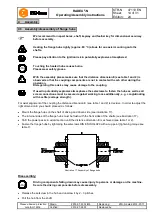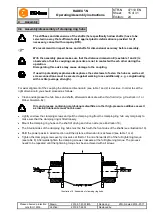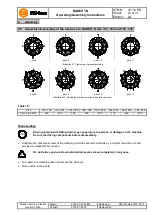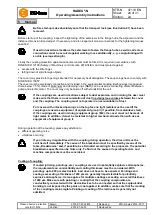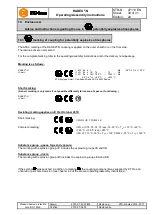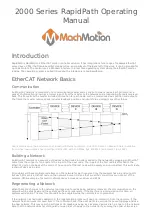
RADEX
®
-N
Operating/Assembly instructions
KTR-N
Sheet:
Edition:
47110 EN
25 of 31
24
Please observe protection
note ISO 16016.
Drawn:
2019-07-23 Pz/Wb
Replacing:
KTR-N dated 2018-07-17
Verified:
2019-07-26 Pz
Replaced by:
The below-mentioned failures can result in a use of the
RADEX
®
-N
coupling other than intended. In addition to
the specifications given in these operating/assembly instructions make sure to avoid such failures.
The errors listed can only be clues to search for the failures. When searching for the failure the adjacent
components must generally be considered.
If used other than intended the coupling can become a source of ignition.
EU directive 2014/34/EU requires special care by the manufacturer and the user.
General failures with use other than intended:
•
Important data for the coupling selection are not forwarded.
•
The calculation of the shaft-hub-connection is not considered.
•
Coupling components with damage occurred during transport are assembled.
•
If the heated hubs are assembled, the permissible temperature is exceeded.
•
The clearance of the components to be assembled is not coordinated with one another.
•
Tightening torques have been fallen below/exceeded.
•
Components are mixed up by mistake/assembled incorrectly.
•
A wrong or no lamina set is inserted in the coupling.
•
No original
KTR
components (purchased parts) are used.
•
Maintenance intervals are not observed.
Breakdowns
Causes
Hazard notes for
hazardous locations
Elimination
Different operating
noise and/or
vibrations occuring
Misalignment
none
1) Set the unit out of operation
2) Eliminate the reason for the misalignment
(e. g. loose foundation bolts, breaking of the
engine mount, heat expansion of unit
components, modification of the installation
dimension E of the coupling)
3) For inspection of wear see chapter 10.2
Dowel screws working
loose, low micro
friction under the
screw head and on the
steel lamina set
Ignition risk due to
sparking
1) Set the unit out of operation
2) Inspect coupling components and replace
coupling components that have been
damaged
3) Tighten the dowel screws to the tightening
torque specified
4) Inspect alignment, adjust if necessary
Screws for axial
fastening of flange
hubs working loose
none
1) Set the unit out of operation
2) Inspect alignment of coupling
3) Tighten the screws to fasten the flange hubs
and secure against working loose
4) For inspection of wear see chapter 10.2
Breaking of steel
lamina set
Breaking of steel
lamina set due to high
impact
energy/overload
Ignition risk due to
sparking
1) Set the unit out of operation
2) Disassemble the coupling and remove
remainders of the steel lamina sets
3) Inspect coupling components and replace
coupling components that have been
damaged
4) Insert steel lamina sets, assemble coupling
components
5) Find out the reason for overload
Operating parameters
do not meet with the
performance of the
coupling
1) Set the unit out of operation
2) Review the operating parameters and select
a bigger coupling (consider mounting space)
3) Assemble new coupling size
4) Inspect alignment
6
Breakdowns, causes and elimination




